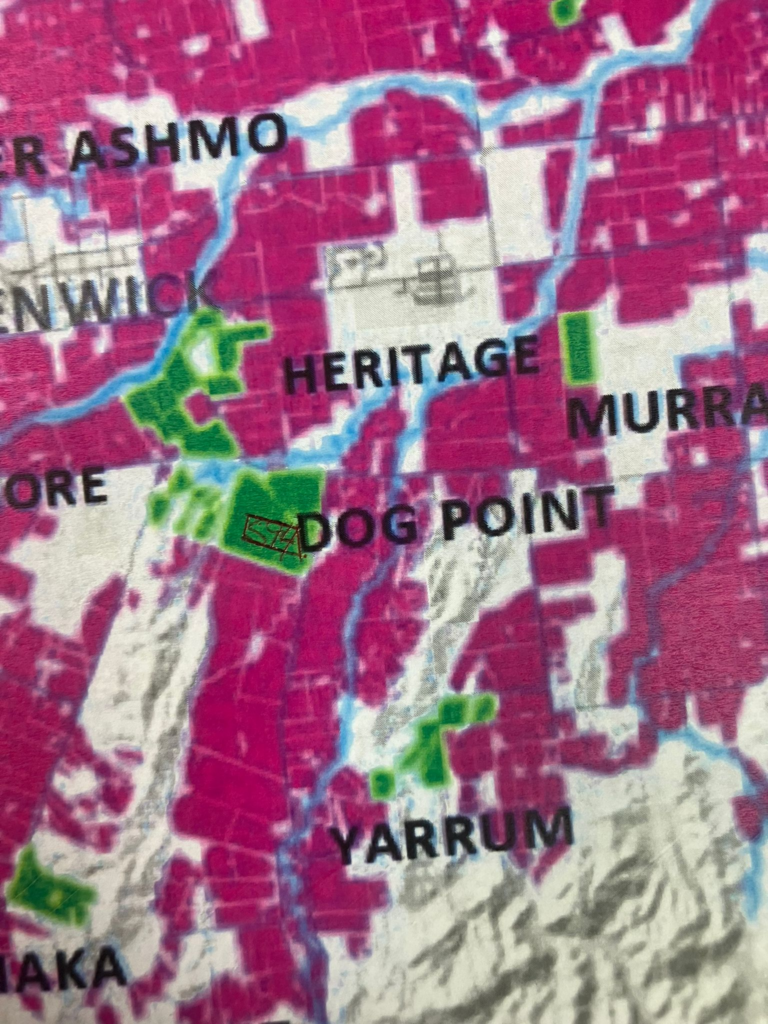Dog Point Vineyard is located in the famous Marlborough wine region of New Zealand and was founded in 2002 by Ivan Sutherland and James Healy. Since then, it has rapidly risen to the forefront of quality New Zealand wines, and you might say that rapid ascent was anything but surprising.

A duo of legendary winemakers
Ivan Sutherland and James Healy are two highly respected figures in the New Zealand wine industry, whose collaboration at Cloudy Bay significantly contributed to that brand’s near-incredible worldwide success (Cloudy Bay literally became synonymous with New Zealand and high-quality wines; its bottles and their iconic label were recognized instantly everywhere in the world).
Ivan Sutherland was one of the earliest grape growers in the Marlborough region, planting vines there in the late 1970s and early 1980s. He joined Cloudy Bay in 1985 as the vineyard manager. His deep understanding of vineyard management and commitment to organic and sustainable farming practices laid the foundation for the winery’s success. James Healy, the other key figure, worked as a winemaker at several wineries in Australia and New Zealand before joining Cloudy Bay in 1990 as the head winemaker. In 2002, Ivan and James decided to leave Cloudy Bay and co-founded Dog Point Vineyard. They are committed to organic and sustainable farming methods to maintain the ecological balance of their vineyards, and the winery received organic certification in 2009. Additionally, they are deeply committed to the concept of single-vineyard wines, focusing on the soil types and microclimates of their various vineyard location and how individual factors of specific terroirs may and do influence the aromas, flavors and the quality of the finished wines. They emphasize using traditional methods, such as wild yeast fermentation and moderate oak usage, to highlight the natural characteristics of the grapes and the wines.
About the Winery
The name “Dog Point” originates from the early history of the region. In the nineteenth century, shepherds would graze their herds in the Wairau Valley, and their sheepdogs would often gather in this area, hence the name “Dog Point.” When the winery was established in 2002, it initially released three wines: Sauvignon Blanc (not surprisingly, given the pair’s heritage, that was the fledgling winery’s flagship wine), Chardonnay, and Pinot Noir. In 2004, Dog Point launched what was going to become its benchmark Sauvignon Blanc: the “Section 94,” named after a specific vineyard block. This wine is fermented in oak barrels and undergoes extended lees aging to impart more complexity and aging potential.
Given that the winery’s organic philosophy is rooted in respecting biodiversity, in 1996 the winery joined the sustainable wine-growing program; and in 2009, it began the transition to organic farming. Today, Dog Point owns and operates the largest Bioagro-certified organic vineyard in New Zealand.
Getting to know Dog Point Vineyard
Dog Point Vineyard is located in Marlborough. By 2021, the vineyard area in Marlborough was approximately 27,000 hectares, accounting for about 70% of the country’s total vineyard area, and making it New Zealand’s largest wine-producing region. This vast vineyard area is primarily dedicated to Sauvignon Blanc (about 85% of the plantings), with the rest planted with Pinot Noir, Chardonnay, and other varieties.
Marlborough’s large-scale Sauvignon Blanc cultivation spans three main sub-regions: Wairau Valley, Awatere Valley, and Southern Valleys, each with distinct soil and climatic conditions.
Dog Point Vineyard is located at the junction of Brancott Valley and Omaka Valley on an alluvial plain. The soil consists mainly of gravel, silt, and clay, with gravel allowing vine roots to penetrate deeply and absorb more minerals, giving the wine its mineral character. The clay and silt loams have good water retention, contributing to deeper color and more complex flavors and structure in the wines.
Dog Point’s Sauvignon Blanc grapes are grown in eight vineyards located in the Wairau Valley sub-regions of Lower Brancott, Renwick, Fair Hall, Omaka, and Rapaura. The Sauvignon Blanc is exclusively planted with the UCD1 clone, with an average yield of 8-9 tons per hectare. The vines are around ten years old. The flagship Sauvignon Blanc Section 94 comes from a single vineyard block in Wairau Valley, with vines that are now over 30 years old and have an average yield of 7-7.5 tons per hectare. For reference, the average yield of Sauvignon Blanc in New Zealand is 10-12 tons per hectare.

Chardonnay is planted on the clay slopes of the Wairau Valley, with an average yield of 6 tons per hectare (data, New Zealand Winegrowers Association). It is a blend of 65% Mendoza clone and 35% B95 clone. The Mendoza clone provides higher acidity and strong citrus characteristics, while the B95 clone offers softer acidity and a subtle, fleshy texture, so the two are a good mix. The vineyard began planting Chardonnay in the early 1990s, and the vines are now likely over 30 years old.
Pinot Noir is grown in the Settlement and Yarrum areas of Wairau Valley, with an average yield of 5 tons per hectare. The Pinot Noir is made from six different clones (Dijon clones B777, B667, B115, Pommard, Clone 5, Abel, and AM10/5). The vineyard also began planting Pinot Noir in the early 1990s, and the vines are now likely over 30 years old.
The wines in the report



